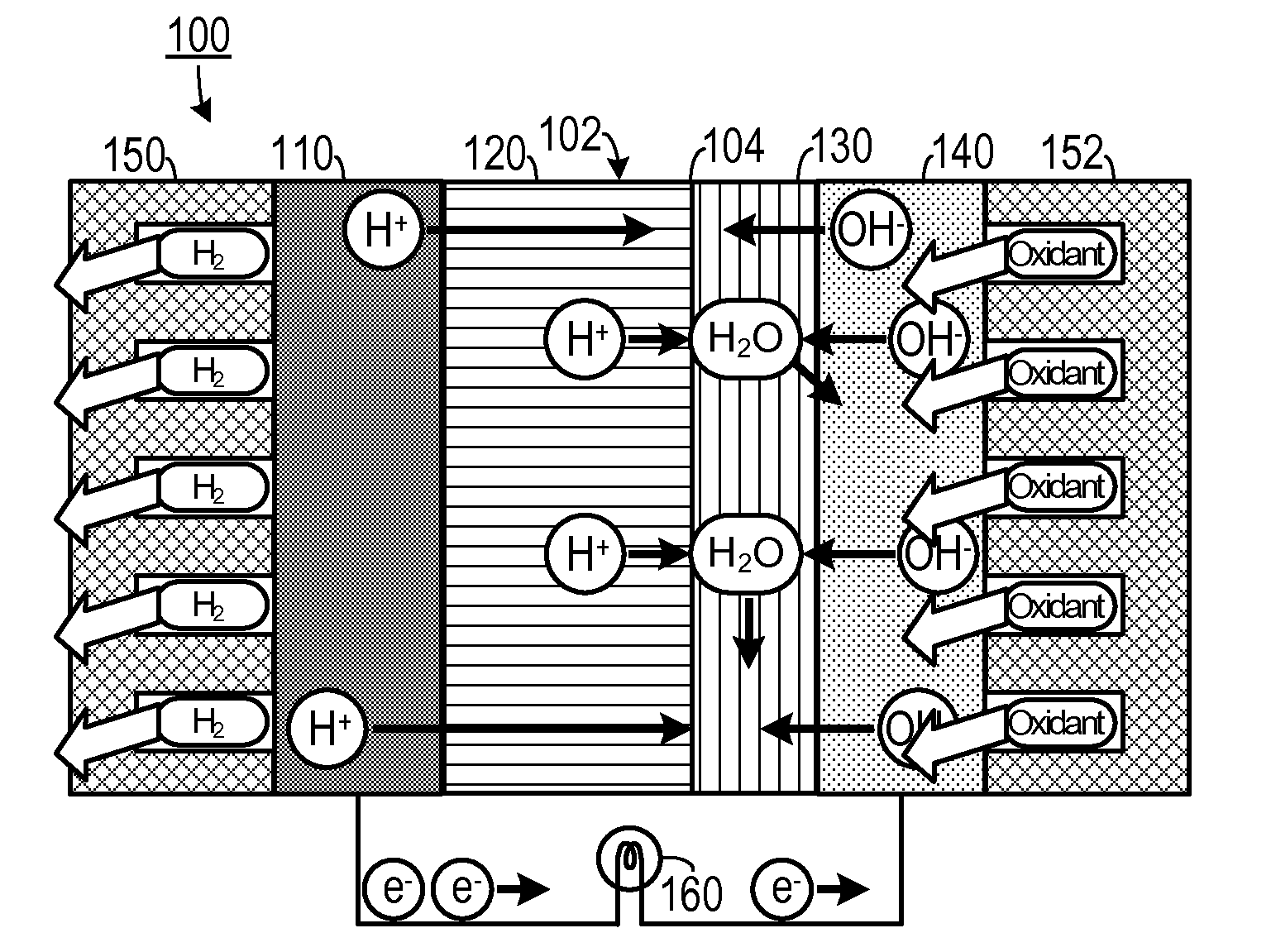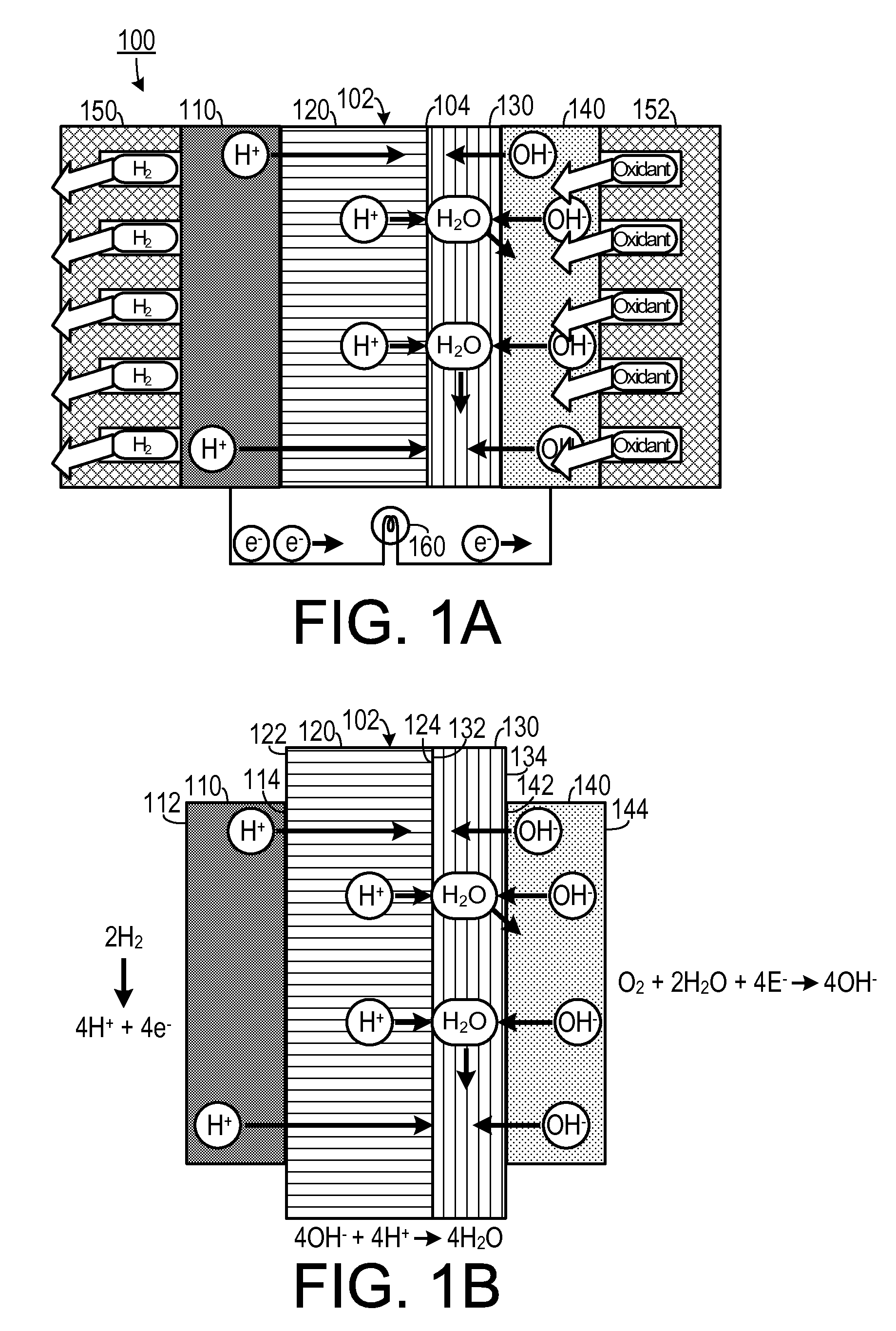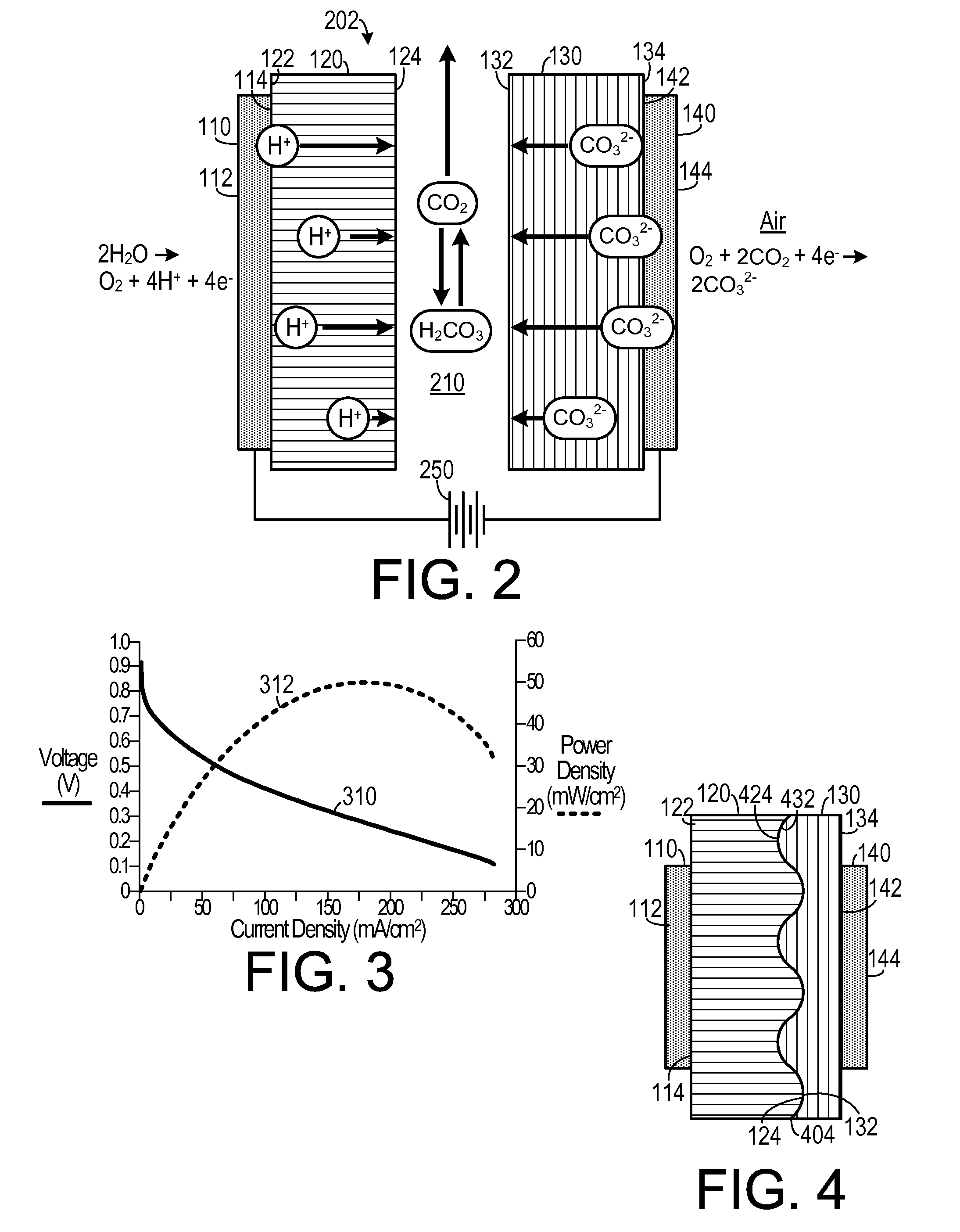Hybrid Ionomer Electrochemical Devices
a technology of hybrid ionomer and electrochemical device, which is applied in the direction of electrochemical generator, cell components, electrolysis components, etc., can solve the problems of sluggish reaction kinetics of pemfc's, carbon monoxide poisoning, and impede the wide-scale commercialization of pemfc's, and achieve the effect of reducing species
- Summary
- Abstract
- Description
- Claims
- Application Information
AI Technical Summary
Benefits of technology
Problems solved by technology
Method used
Image
Examples
Embodiment Construction
[0022]A preferred embodiment of the invention is now described in detail. Referring to the drawings, like numbers indicate like parts throughout the views. Unless otherwise specifically indicated in the disclosure that follows, the drawings are not necessarily drawn to scale. As used in the description herein and throughout the claims, the following terms take the meanings explicitly associated herein, unless the context clearly dictates otherwise: the meaning of “a,”“an,” and “the” includes plural reference, the meaning of “in” includes “in” and “on.” Also as used herein, “negative charges,”“negatively charged ions” and “negatively charged particles” include electrons; “positive charges,”“positively charged ions” and “positively charged particles” include protons.
[0023]As shown in FIGS. 1A and 1B, one embodiment of an electrochemical device that may be configured to generate electricity, such as a fuel cell 100, includes a hybrid membrane electrode assembly 102 surrounded by a fuel...
PUM
| Property | Measurement | Unit |
|---|---|---|
| conductivity | aaaaa | aaaaa |
| ionic conductivities | aaaaa | aaaaa |
| thermodynamic cell voltage | aaaaa | aaaaa |
Abstract
Description
Claims
Application Information
 Login to View More
Login to View More - R&D
- Intellectual Property
- Life Sciences
- Materials
- Tech Scout
- Unparalleled Data Quality
- Higher Quality Content
- 60% Fewer Hallucinations
Browse by: Latest US Patents, China's latest patents, Technical Efficacy Thesaurus, Application Domain, Technology Topic, Popular Technical Reports.
© 2025 PatSnap. All rights reserved.Legal|Privacy policy|Modern Slavery Act Transparency Statement|Sitemap|About US| Contact US: help@patsnap.com



